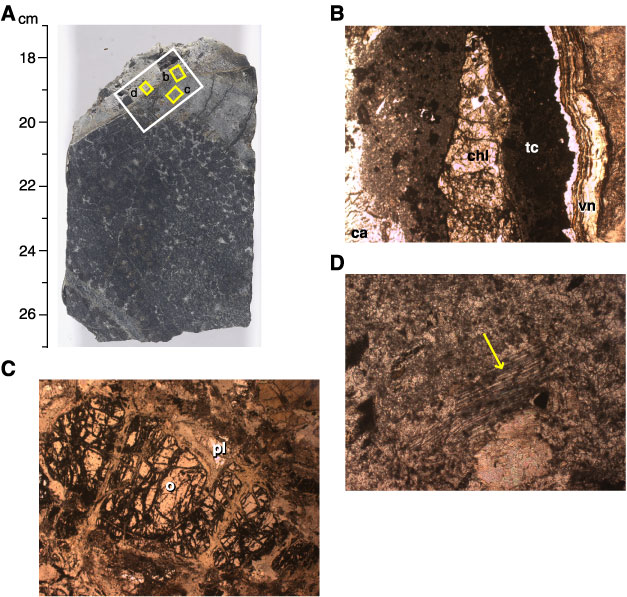
Figure F48. A. Close-up photograph of a mafic vein and host troctolite cut by a felsic magmatic vein. Note that the brownish colors in the troctolite near the contact with the mafic vein are due to the presence of relict olivine (see C). The white box outlines the area of a thin section (interval 209-1275D-9R-2, 17–27 cm). B–D. Photomicrographs of areas indicated by small yellow boxes in A (Sample 209-1275D-9R-2, 17–20 cm) (plane-polarized light: blue filter); (B) contact between a talc-chlorite–altered mafic vein (right) and a carbonate-altered felsic vein (left). Near the contact, the felsic vein is rich in talc (tc; turbid, appears dark). An elongate chlorite-rich clast (chl) and a rhythmically banded serpentine-carbonate vein (vn) are also developed (field of view = 5.5 mm; image 1275D_010); (C) fresh olivine (o) and plagioclase (pl) at the contact between a completely altered gabbroic vein (upper right corner) and very highly altered troctolite (lower left corner) (field of view = 5.5 mm; image 1275D_011); (D) completely altered felsic vein. Alteration is mainly to carbonate and patches of talc. Relict plagioclase cleavage is preserved (arrow) (field of view = 2.75 mm; image 1275D_012).



![]()